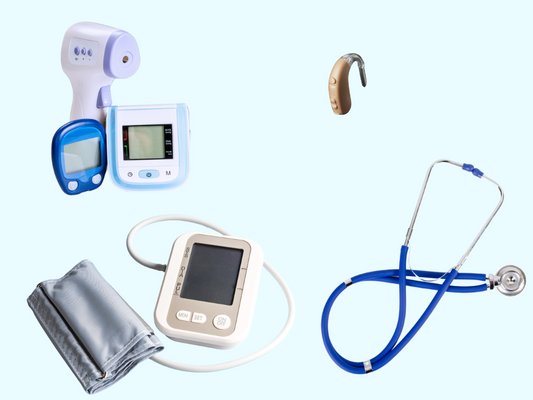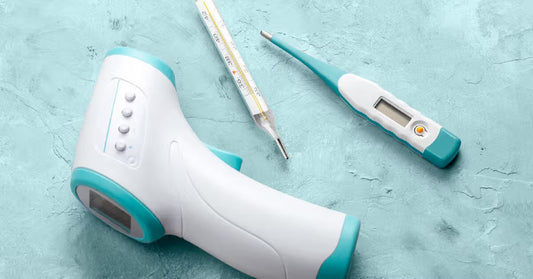
What To Look for When Buying a Welding Helmet
Are you looking to buy a welding helmet for the first time and confused about which one will provide the optimum protection? We know that there are a number of welding helmets available in the market, but each provides a different level of protection and safety.
If you are a welder or are considering taking up welding as a profession, these helmets will be your best friend. Among the essential Personal protective equipment (PPE), a welding helmet is at the top of the list.
From construction to auto repair, there is a need for welding services, but welding can also be dangerous for the welder himself and as well as the people around him because welding produces heat, sparks, and harmful UV rays that are harmful to the eyes and face. The welding helmet is the only thing that can protect the welder from any hazard and also improves its welding experience.
Today, we will discuss some welding helmets, their usage, and how to select the right helmet for your needs.
Different Types Of Welding Helmets And Their Applications
Welding is an extensive field that involves many processes. Each process requires specific equipment. It’s important to match the welding helmet you choose with your welding specialty. Here’s a quick overview:
- Stick Welding: Stick welding, also known as Shielded Metal Arc Welding (SMAW), involves using a consumable electrode. It typically produces more sparks and smoke. For this process, a helmet with excellent protection and a fast auto-darkening response is crucial.
- TIG & MIG Welding: Tungsten Inert Gas (TIG) and Metal Inert Gas (MIG) welding are versatile and widely used. Look for a welding helmet that suits your specific MIG welding application, whether it’s for industrial, hobbyist, or DIY purposes.
- Plasma Cutting: If your welding tasks include plasma cutting, consider a welding helmet that protects against ultraviolet and infrared radiation. These cutting processes generate intense light and heat, making appropriate eye protection essential.
How To Choose A Welding Helmet?
1. Safety Standards
Before making a purchase, make sure that the helmet you are going to purchase meets or exceeds all safety standards. Such as The ANSI Z87.1 standard is the most widely accepted for welding helmets. It sets standards for helmets’ ability to protect from impacts and optical quality. Suppose you are doing welding work, like arc welding, where harmful light is generated. In that case, you should also look for helmets that comply with the ANSI Z87+ standards, which address protection against radiant energy.
2. Auto Darkening:
Auto-darkening helmets are another safety feature to be considered. Sensors in auto-darkening helmets darken the lenses automatically when the intensity of light is increased during welding. This feature protects your eyes against harmful UV and IR rays while also allowing for visibility when you are not welding. You should ensure that the auto-darkening function is high-quality and can respond quickly to changing lighting conditions. Choose helmets that comply with ANSI Z87.1 and have a range of shades that are appropriate for your welding process.
3. Lens Clarity
Lens clarity is an important aspect of any welding helmet. For precise welding, a clear view with no distortion is crucial. To ensure that they are welding efficiently and accurately, welders must be able to see the welding puddle and surrounding environment clearly.
The optical clarity rating is important. The clearer your view, the higher the rating. The highest rating for clarity, 1/1/1/1, indicates the least distortion, uniform shade, and light diffusion. The best welding helmets are those with this rating. They may cost more, but they provide the highest quality vision.
4. Shade and Sensitivity control
Another important feature to look for is the Shadetronic feature. A welding helmet may have manual shade adjustment or automatic shade adjustment. This shade control feature allows you to adjust the darkness of the lens according to the welding procedure. Different welding processes and amperages require varying levels of protection. For instance, TIG welding typically requires a lower shade level (around 8-13), while MIG and stick welding may require a darker shade (10-13).
A helmet with auto-darkening is not complete without a sensitivity control. You can adjust the helmet to respond to light. This will ensure that the lens is darkened and cleared at the correct time. This feature is especially useful to prevent accidental flashes and unwanted darkening when welding.
5. Viewing Area
The larger viewing area allows for a wider field of view and allows you to see your workpiece more clearly without having to adjust your helmet constantly. This can improve accuracy and reduce the frequency of helmet repositioning.
It’s important to find a balance when it comes to a large viewing surface and the weight of the headgear. Larger lenses can add weight to the helmet, making it uncomfortable for long welding sessions. You should consider your individual needs and preferences when determining the best balance between viewing area, comfort, and weight.
6. Brand and Warranty
Brands with a history in the welding field are more likely than others to produce helmets that are reliable and durable. Established brands also offer better customer service and are easier to reach for replacement parts. The welding helmet price in Canada varies according to the brand.
Another important factor to consider is the warranty. The warranty will cover any defects in the manufacturing or malfunctions of your helmet. Before purchasing a helmet, make sure you read the warranty conditions and terms.
7. Comfort and Fit
Welders have to wear the helmets for a long period. So always go for the helmets with comfortable headgear that has ample padding and can be adjusted. The headband must distribute the weight of the helmet evenly in order to reduce fatigue and discomfort. Some helmets have pivot points, which allow you to adjust your helmet’s angle for comfort and visibility.
Comfort is also influenced by ventilation. Ventilation systems are included in some helmets to reduce the heat inside. It is especially important for hot environments.
8. Weight
The weight of a welding helmet can affect your comfort and productivity. Very lightweight helmets, however, may not be as robust or durable. Your personal preferences and welding style will determine the ideal weight of a welding helmet. You may choose to prioritize weight over durability if you are doing heavy-duty welding. If you’re buying locally, wear a helmet to find a balance between a comfortable weight and the durability you need for your welding application.
9. Grind Mode
Some welding helmets have a grind function, allowing you to use them as a face shield for grinding or other non-welding activities. This versatility allows you to save time and effort by not having to switch between a welding mask and a separate grinder visor.
10. Durability and Build Quality
You’ll want a welding helmet that will last. Helmets that are made of durable materials can withstand welding conditions. High-quality helmets have sturdy shells and are made of impact-resistant materials. They also protect the lens against sparks and debris.
Also, consider the quality of the headgear. Helmets that have metal parts tend to last longer than those made of plastic. To ensure that it can withstand the daily rigors, look for a helmet that has a robust pivot mechanism, secure adjustment, and sturdy headgear.
Final words
In the end, the helmet that will provide the best safety, comfort, and welding efficiency within a budget is the right one. But it’s not a wise decision to compromise quality in order to save some money. Investing in high-quality helmets is an investment for your safety and ability to produce high-quality welds. So, choose wisely to ensure many years of safe and productive welding.







